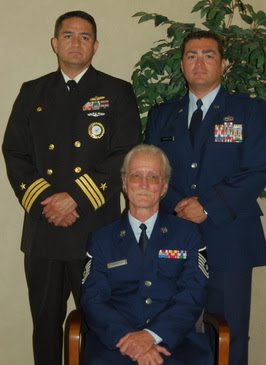How do you smoke a cigar? This may seem like a silly question, but you might be surprised to know that the majority of cigar enthusiasts are not smoking their cigars in a fashion that maximizes their flavor and full potential. For an aficionado, tasting a cigar is equally as intricate as a sommelier tasting a wine. Since we have covered the methods of properly lighting a cigar several times in our previous newsletters, lets pick up where we left off and now discuss the proper methods of smoking a cigar. The key component to tasting all of the elements a fine hand-made cigar has to offer is the draw. There must be enough smoke pulled into the palate to detect all of its nuances. To draw a cigar properly, although most aficionados have their own system, the most common practice used is referred to as the “
 The second phase is to use your mouth for the preliminary classification of flavors. In your mouth, the smoke does not have a discernable flavor, but rather stimulates specific areas of the palate to distinguish between the major areas of the tongue. These areas of the tongue pick up bitter (the center rear), acidic (rear sides), salty (front sides) or sweet (tip) flavors. A well-balanced cigar will stimulate each of these regions evenly. To help your palate with this process, puff out your cheeks and allow the smoke to swirl around in your mouth.
The second phase is to use your mouth for the preliminary classification of flavors. In your mouth, the smoke does not have a discernable flavor, but rather stimulates specific areas of the palate to distinguish between the major areas of the tongue. These areas of the tongue pick up bitter (the center rear), acidic (rear sides), salty (front sides) or sweet (tip) flavors. A well-balanced cigar will stimulate each of these regions evenly. To help your palate with this process, puff out your cheeks and allow the smoke to swirl around in your mouth.
Now for the tricky step, utilizing your nose. This step is most often missed by cigar enthusiasts and is crucial to the smoking and tasting experience. While the mouth is important in identifying balance, the nose is where an aficionado will detect specific aromas like wood, leather, peat, spice, etc. After the smoke has swirled in your mouth, draw it to the rear of your throat (sometimes a swallowing action is required) and gently exhale part of the smoke through your nose. This is a very difficult talent to master and takes a lot practice. The key, as you get started, is to only blow 10% of the smoke through your nose and the rest out of your mouth. As you become more comfortable, you can increase this amount until you are ideally utilizing both your mouth and nose equally (50/50) when releasing the smoke. Exhaling through the nose is important because the nose is home to the majority of the flavor and odor receptors in the body. In fact, 80 to 90 percent of a cigar’s taste is actually detected by the nose.
So what now? You may have just read this and realized you have been doing it all wrong. I too had this realization several years ago after meeting Hendrik Kelner of Davidoff, who taught me many things about tasting and balance. After I transitioned to using my nose when enjoying a cigar, everything I tried tasted differently. Some of my favorites were suddenly not as enjoyable as I previously thought, and some other cigars I had some distaste for became my everyday smokes. Practicing proper technique is not something to be afraid of. Whether you are just starting out now or simply transitioning after many years of experience, utilizing some of these proper techniques will only heighten your enjoyment and appreciation for fine cigars.
I present this lil piece strictly for discriminating adults, of course. And Happy Hour is nearly upon us, at which time I’ll go put this ritual into practice. FWIW... I’ve been doing it correctly all along, as it turns out. Not that I give a dang about technique. Wait, check that. I most certainly DO care about technique… it’s what separates the amateurs from the pros, ain’t it?
Maybe next time we’ll talk about suitable beverages to accompany your cigar. Tip: I’ll be enjoying the drink pictured in a very short while…




.jpg)




I do all of that...minus the nose. I know that the nose is essential to tasting anything properly (which is why I have more pint glasses and tumblers than all other eating utensils combined) but I don't smoke enough cigars to get used to the sensation of smoke in the nose. Yet.
ReplyDeleteWhile I'm sure you already read Big Tobacco (if you don't, you should) he's got a couple of posts pertaining to this subject worth reading. One is a guide to cigars for beginners, the other is a guide to cigar etiquette.
I'll pass, thank you. Toby's dad was a cigar smoker - constantly with what looked like a turd hanging in his lips. I guess he was doing it wrong, because it just stunk.
ReplyDeleteI'm with Lou. Yuck.
ReplyDeleteThanks for the links, Mike. I part company with BT in one aspect of cigar etiquette... I usually leave the band on. It makes a nice marker, of sorts, for when to quit smoking the thing. Unless I'm having one of those cigars where the band takes up half the stick... then off it comes, LOL! ;-)
ReplyDeleteLou: I think we've had this discussion before, no? I'm of the opinion that cheap cigars stink, while fine cigars have a wonderful aroma. But then again, some people's palettes are offended by garlic, which I simply could NOT live without...
Amy: We'll have to agree to disagree, eh? ;-)
"a sommelier tasting a wine"...
ReplyDeletewhich would prove your point, i mean, what sommeliers out there are drinking $3 wine.